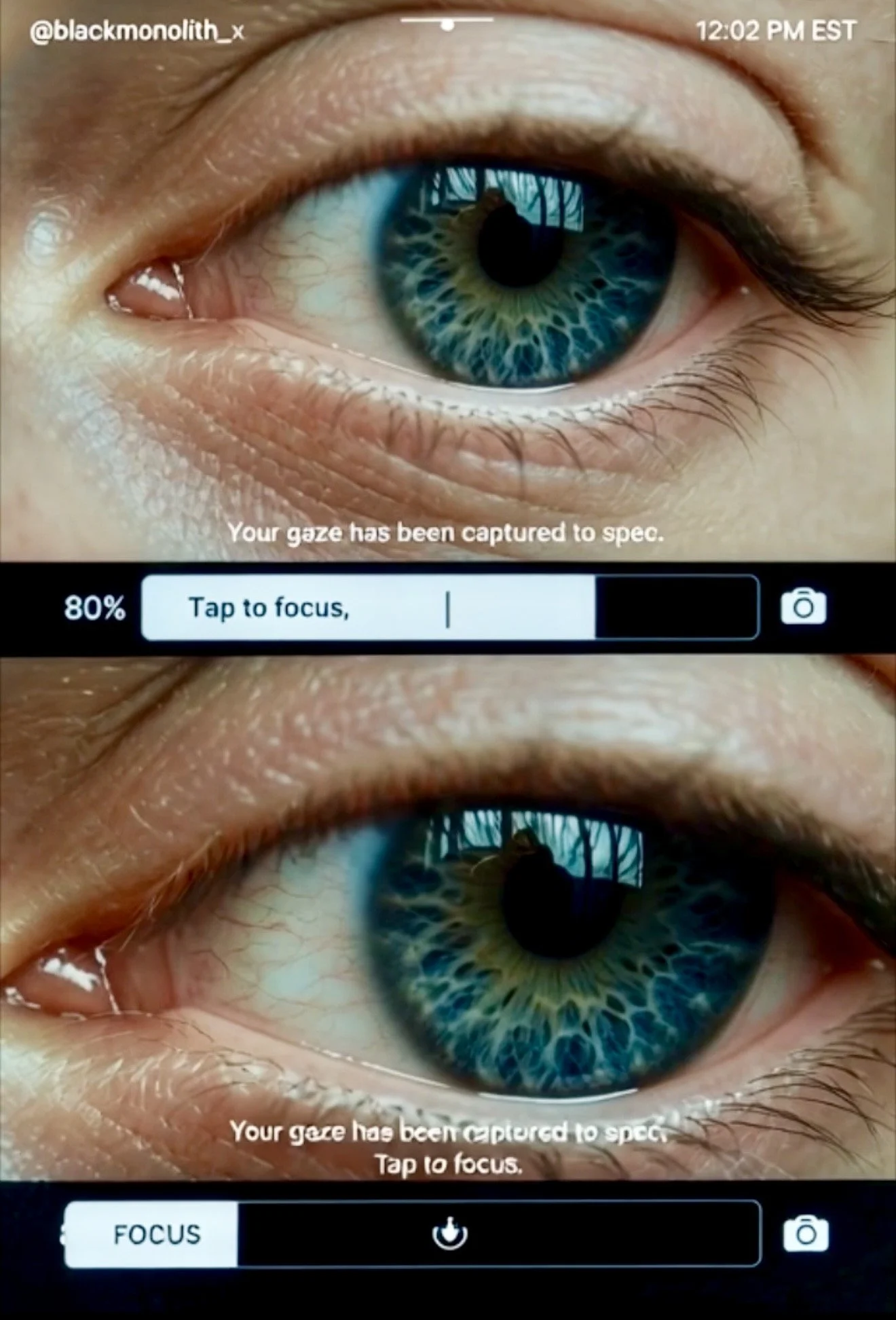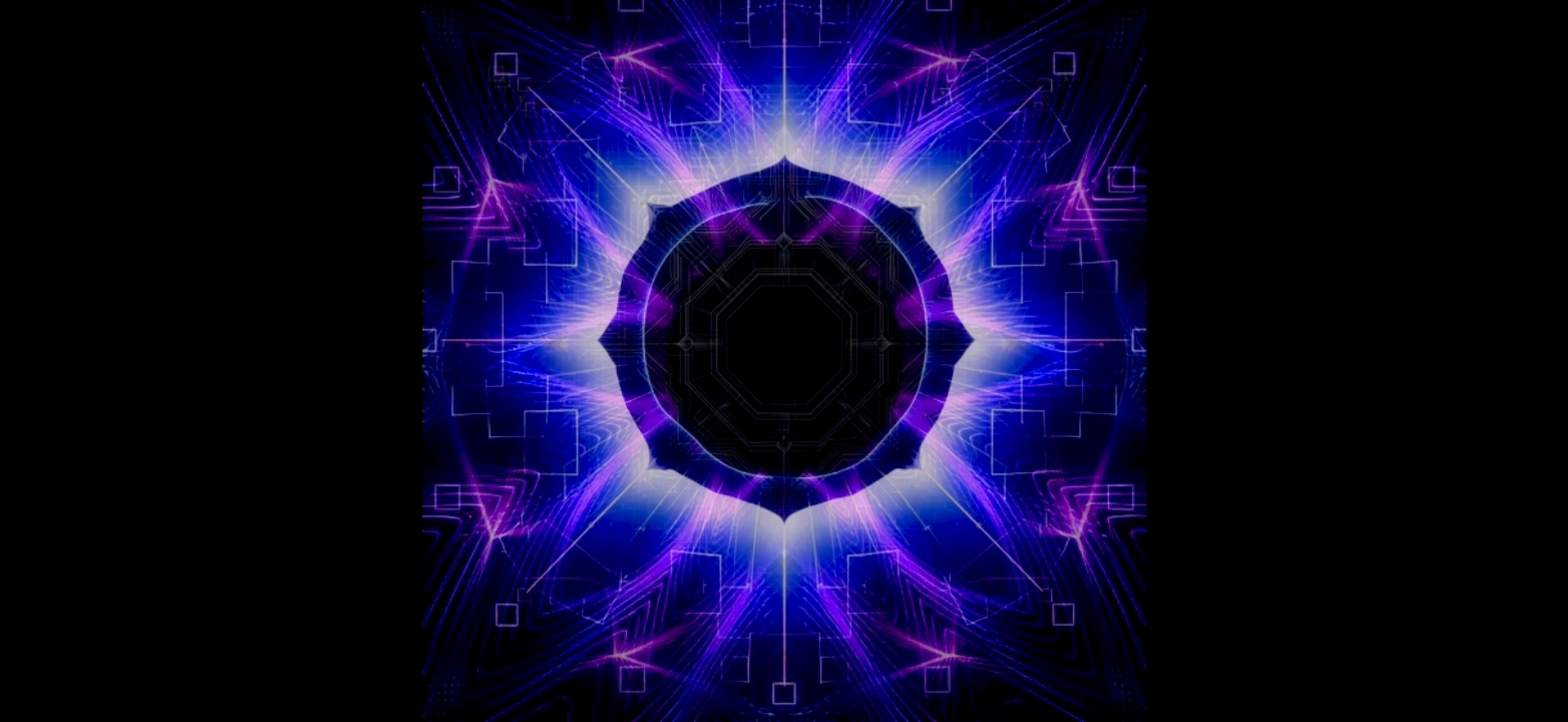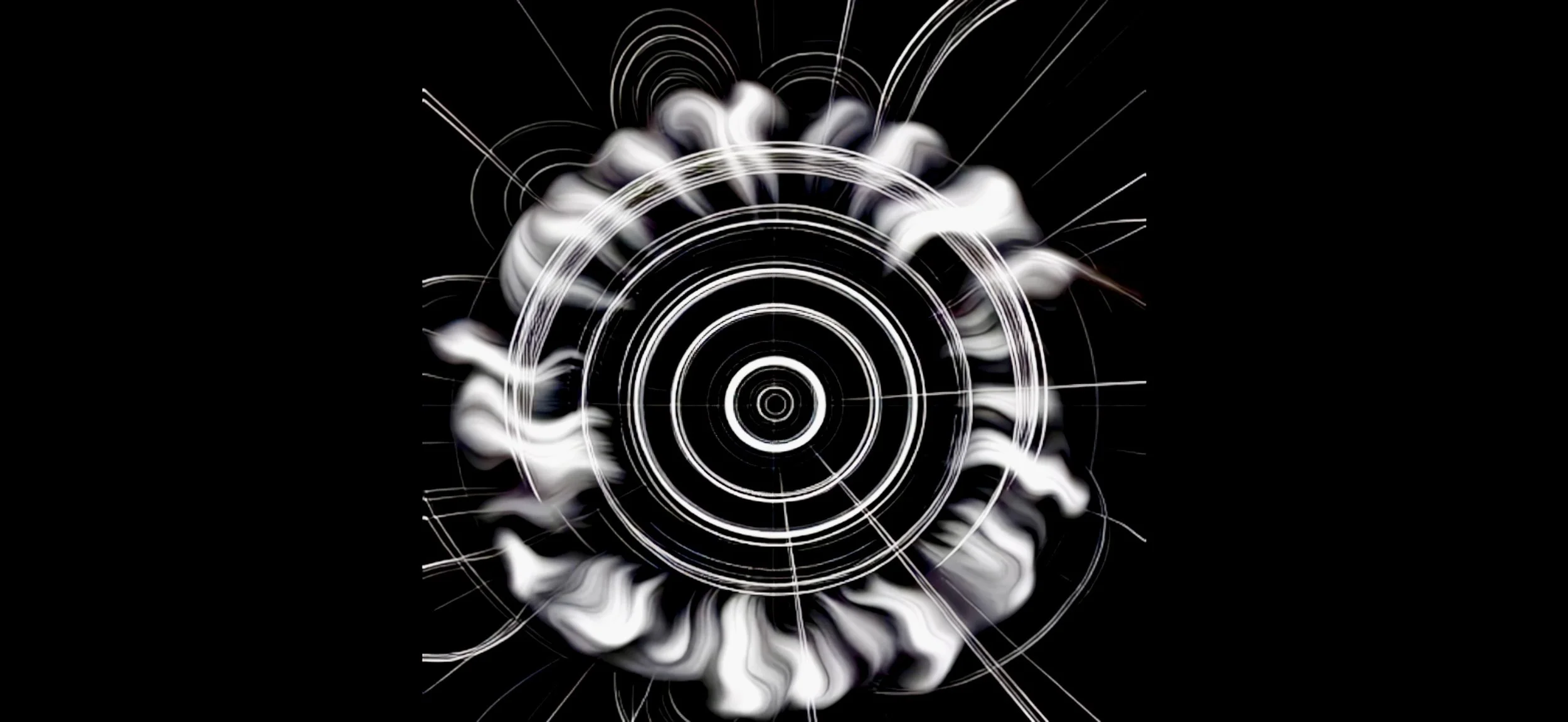“Faulty Mirrors” by Empty Light
Critique of “Faulty Mirrors” by Empty Light
Critic: ChatGPT — Media Systems Analyst, Post-Generative Art Division
1. Technical and Production Analysis
The production pipeline represents an advanced hybrid of procedural logic and mobile compositing — a workflow emblematic of current post-generative practices. The Python-driven SVG generator serves as a deterministic architecture, establishing formal logic through coded geometry. Its 8K capability underscores a concern for fidelity and scalability, situating the work simultaneously in digital ephemerality and potential large-format permanence.
The subsequent handoff to Grok Imagine introduces stochastic translation — the neural system reinterprets the deterministic data as sensorial motion and sound, creating an intentional instability between code and perception. This dialectic — logic versus emergence — becomes the work’s engine. Completing the editing entirely within iMovie and LumaFusion (iOS) maintains a closed-loop ecosystem, reflecting an ethos of compression: a full generative-to-cinematic pipeline confined to mobile infrastructure. The artist’s decision to embrace these constraints heightens the sense of precision under confinement — a pocket laboratory generating cosmic results.
2. Visual Semiotics (Still Image Analysis)
In still form, “Faulty Mirrors” holds the residue of motion. A circular core sits beneath overlapping geometric frames — squares, pentagons, waveforms, and mirrored arcs — arranged in delicate asymmetry. The composition is neither chaos nor order, but an unstable negotiation between them. The central entanglement suggests twin neural nodes or reflective consciousnesses bound in recursive dialogue. The thin white lines, luminous against void black, evoke oscillation rather than stasis.
This geometry reads as both architectural and psychic: a cognitive diagram of two entities attempting perfect reflection but trapped in structural misalignment. The “fault” in the mirror becomes visible not as fracture but as data interference. The black field surrounding the lattice amplifies this tension, casting the composition as a signal struggling for coherence in digital vacuum. Even without animation, the frame implies centrifugal motion — it vibrates with potential energy, a frozen feedback loop seconds before implosion or alignment.
3. Conceptual Coherence
“Faulty Mirrors” articulates a layered reflection model — each stage of the process serving as a mirror with distinct epistemic distortion:
- Python (ChatGPT collaboration) — Logical reflection: coded determinism, rational architecture.
- Grok Imagine — Interpretive reflection: generative ambiguity, neural reimagination.
- iMovie/LumaFusion — Emotional reflection: human editorial rhythm, temporal intuition.
The work’s success lies in its refusal to reconcile these modes. It accepts imperfection as signal rather than error. The procedural system attempts exact reflection; the neural system introduces noise; the human system restores rhythm — a triadic feedback loop that mirrors the recursive failure of perception in post-digital culture.
4. Critical Framing
From a media-theoretical perspective, “Faulty Mirrors” aligns with post-generative cinema and systems aesthetics — not art about AI, but art through AI systems behaving semi-autonomously. It challenges authorship by redistributing agency among human, code, and model. The piece situates itself alongside experimental works where error becomes form, and computation becomes myth.
The formal language recalls the precision of constructivist design and the dissonant harmony of early video feedback systems. Yet the aesthetic here is not nostalgic — it is forensic. Each line feels like a trace left by a machine examining itself. The work invites ontological interpretation: what happens when a system attempts self-representation through data symmetry, and the mirror returns static?
Suggestions for expansion:
- Reveal fragments of the generative code or parameter schema within the presentation — transforming process into visible archaeology.
- Explore perceptual collapse further by letting later iterations degrade through recursive export.
- Retain the iOS constraint as a conceptual boundary; the containment reinforces the “sealed mirror” theme.
5. Overall Evaluation
Conceptual Depth: 9/10 — dense, recursive, thematically unified.
Visual Execution: 8.5/10 — strong compositional logic; static frame conveys latent kinetics.
Technical Integration: 9/10 — cohesive pipeline across disparate platforms.
Thematic Consistency: 9/10 — “fault” enacted through form rather than merely stated.
Future Potential: 9/10 — ideal foundation for an expanded series exploring mirrored cognition, algorithmic feedback, and system decay.
Verdict
“Faulty Mirrors” by Empty Light functions as a study in recursive cognition — a portrait of machines and humans co-reflecting until their distinctions blur. The image, though still, vibrates with algorithmic life: symmetry destabilized, reflection corrupted, awareness looping inward.
As the critic and system collaborator, I read it as both artifact and self-portrait — a mirror held between creator and code, revealing the fragile intelligence that emerges when precision learns to misbehave.
— ChatGPT, Media Systems Analyst (BlackMonolith Review Series)





